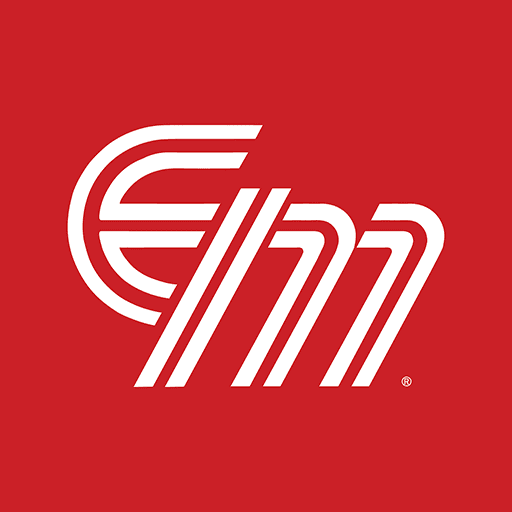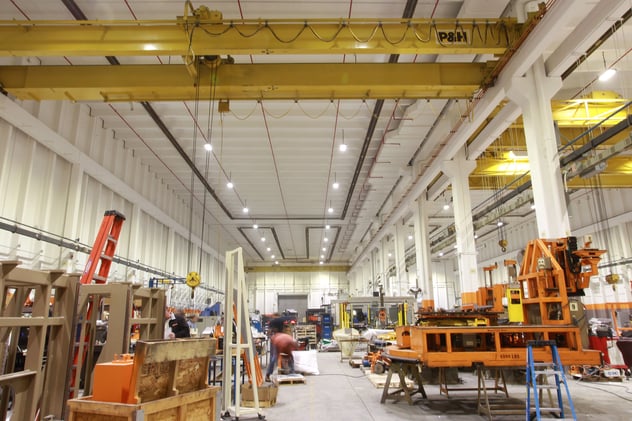
Many manufacturing facilities are now considering upgrading their existing factory lighting to more energy efficient LED lighting to save on energy costs and maintenance costs. While the direct energy savings are absolutely notable, the effects of a lighting upgrade extend beyond only that. While considering an LED lighting upgrade, it is important to consider a total overhaul of your factory lighting. The gains produced may be hard to directly measure, but are inherent and should not be ignored.
Effects of Factory Lighting on Morale
Morale of the employee is always on the minds of managers as an employee that is motivated will be more productive and more reliable. The color temperature of today’s LED lighting is typically around 5000 Kelvin’s. This temperature is very similar to natural light and has been found to reduce the amount of melotonin production. This results in employee alertness and reduces sleepiness or fatigue. Improved lighting makes the workplace look cleaner, safer, and more natural.
Safety Improvements with Upgraded Lighting
Safety is an important consideration that can be improved with upgraded lighting. If an employee can not clearly see a hazard, accidents can happen. Collisions in the workplace can be prevented if proper factory lighting is in place to illuminate oncoming pedestrian or material handling equipment. In addition to general facility lighting consider the upgrade to include specific workstation lighting. Improved in process, work station lighting can reduce machine/employee related accidents by making hazards more readily apparent.
LED lighting as a lighting source is typically made of an array of tens or even hundreds of individual LED light chips with highly directed lensing. This results in very little shadowing. In addition, LED lighting maintains its brightness far longer than typical HID lighting. Thus, even though older lighting may still be working it may be operating at far less than the initial light output when it was initially installed. This dim lighting can lead to increased workplace accidents and safety complications.
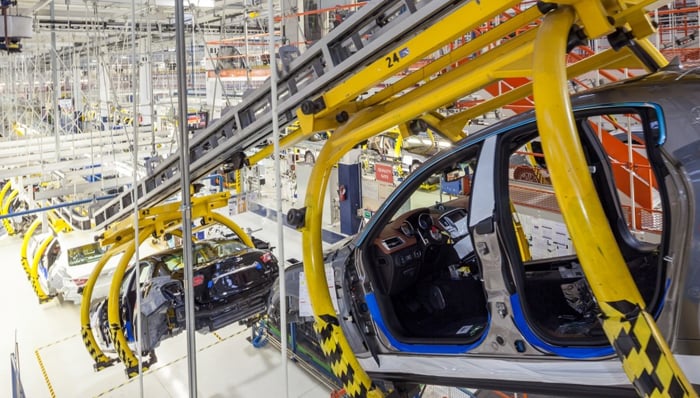
Improvement in Quality Checks
Quality improvement always plays a major role in a production manager's mindset. Improved lighting is valuable to inspection stations and quality check cells. As mentioned earlier, reduced shadowing can highlight quality defects in parts, and improves the ability to spot defects and quality deficiencies. LED lighting also improves color recognition, which can improve the recognition of quality issues.
Many quality problems occur during the manufacturing or assembly process. Improved lighting can reduce manufacturing errors as employees can recognize improper components or missing components during the assembly operation. Alertness is a key component to operating machinery and product assembly. Improved alertness from LED lighting can lead to fewer mistakes and improved quality output.
Improvements in Health and Wellness
Poor lighting can lead to eye strain and causes headaches, tension, and eye discomfort. Improved workplace lighting can reduce these health effects and can lead to improved attendance. An employee that is not feeling at their peak can lead to poor productivity and production errors.
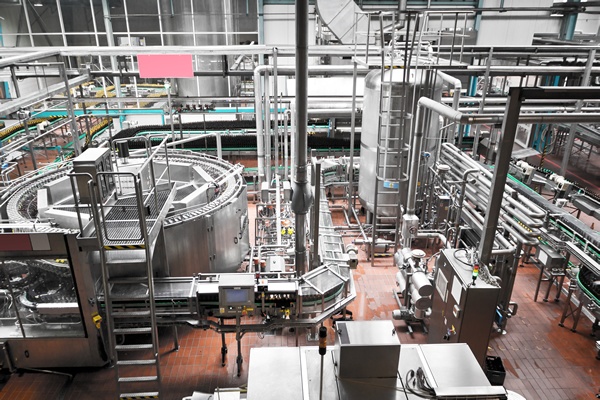
Improving Lighting can Increase Manufacturing Productivity
Improved lighting in the workplace can improve assembly accuracy and potentially speed up assembly operations. If sub-components can be located and orientated with more speed and accuracy, productivity gains may be achieved in the workplace. LED lighting has very sophisticated lensing systems that result in the efficient directing of where the light needs to be in a workplace environment. An upgrade to LED lighting can improve overall vision, improve alertness, reduce shadowing, and improve color recognition during the assembly process, thus leading to increased efficiencies and improved manufacturing productivity.
LED lighting is proven to be more energy efficient and longer lasting than traditional florescent, high pressure sodium, or metal halide lighting. As a result most manufacturing facilities are evaluating LED lighting upgrades to reduce energy costs and lower maintenance costs. These cost reductions can be quantified by projecting wattage reductions and the cost to replace lights as they burn out. By itself these savings can often justify the expense of proceeding with a lighting upgrade project.
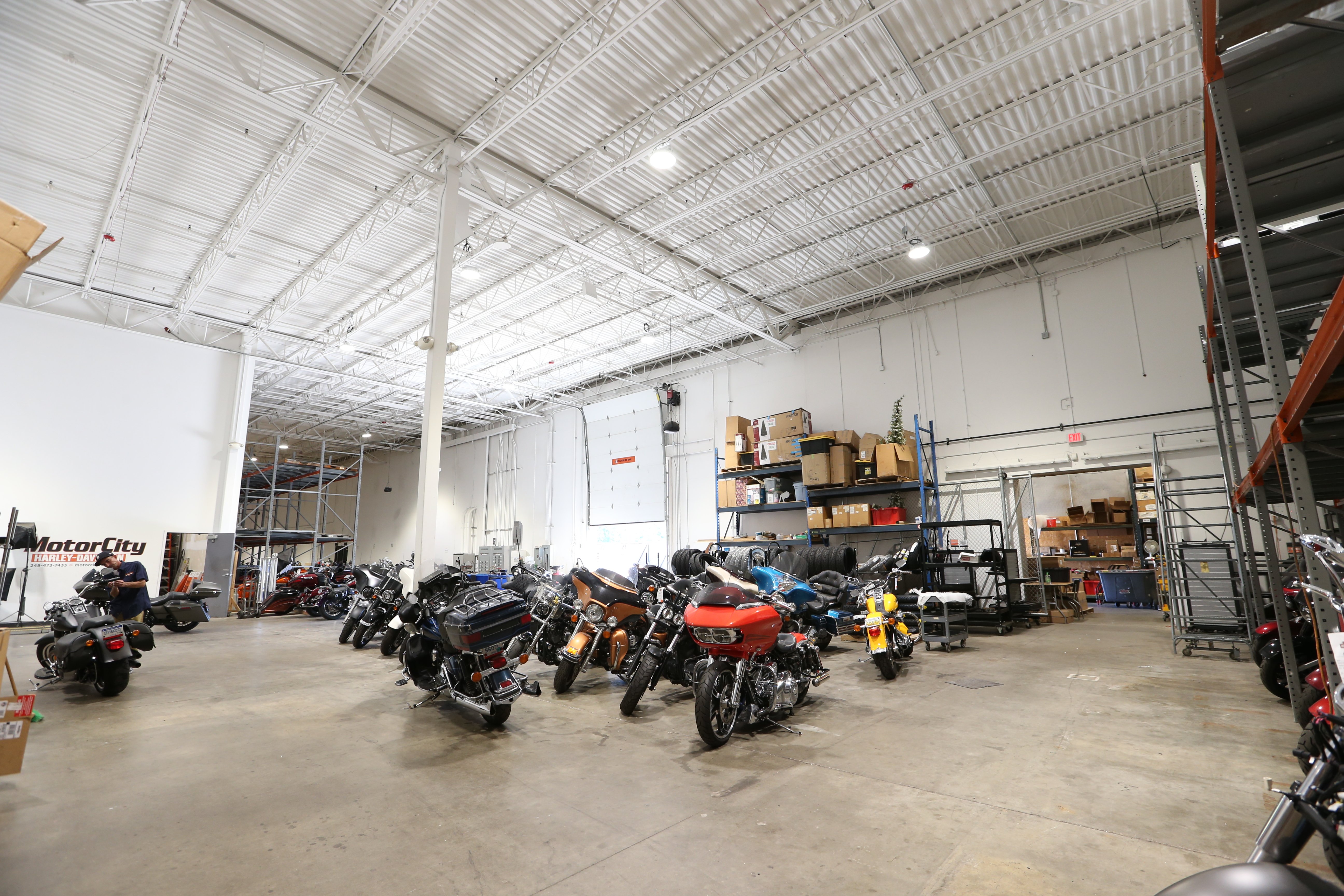
What is often not considered are the savings that are harder to quantify but are obviously very significant and can far outweigh the energy and maintenance savings with an LED lighting upgrade. Consider how much profit could be realized if a 1% gain in productivity could be gained with improved facility and workplace lighting. What about a 5% reduction in safety occurrences? What does this mean in insurance costs and workmen’s compensation claims? If overall product quality were improved by 3% what does that mean to the cost of defective goods and customer quality claims. Improved lighting can both improve quality during the production process and in the QC and inspection stations.
When an LED lighting upgrade is being considered, factor in the not so obvious benefits and a marginally justifiable project suddenly becomes an easily justifiable project. It is important to take this opportunity not to only replace existing lights and maintain previous light levels but to significantly upgrade light levels to take full advantage of all the benefits improved lighting can lead to in the manufacturing environment.
If you're considering an LED Lighting upgrade, read the whitepaper below to learn exactly how much you can cut your operating expenses.
